Seed Treatment, Seeding Rate, and Planting Date: How Early is Too Early to Plant and Optimize Soybean Yield Potential?
April 4, 2025
TRIAL OBJECTIVE
- Planting date influences soybean yield by determining exposure to seasonal conditions and the timing of key reproductive stages, possibly impacting final yield potential.
- Seed treatment enhances early establishment by helping to protect seedlings from diseases, insects, and stress, improving stand uniformity and emergence for increased yield potential.
- Seeding rate (seeds/acre) affects competition, canopy closure, and resource use. A balance of these factors is required to help optimize yield, input costs, and crop performance.
- This study evaluates how planting date, seed treatment, and seeding rate interact to influence soybean establishment and yield potential, aiding in management decisions for maximum productivity.
RESEARCH SITE DETAILS

- The trial design was a randomized complete block with two replications. The three treatment factors were seed treatment, seeding rate, and planting date (Table 1).
- Planting dates were originally targeted to occur every two weeks after the initial target of March 15, 2024. Weather occasionally caused some of the planting dates to be shifted a few days earlier or later than intended.
- Weather was variable after planting, including cold and snowy conditions on March 24 and 25, 2024, which stressed the planted seed, and cool and wet conditions near the end of April.
- Field operations, cover crop seeding rate and planting time, fertilizer and herbicide applications, irrigation, and precipitation information are listed in Table 2.
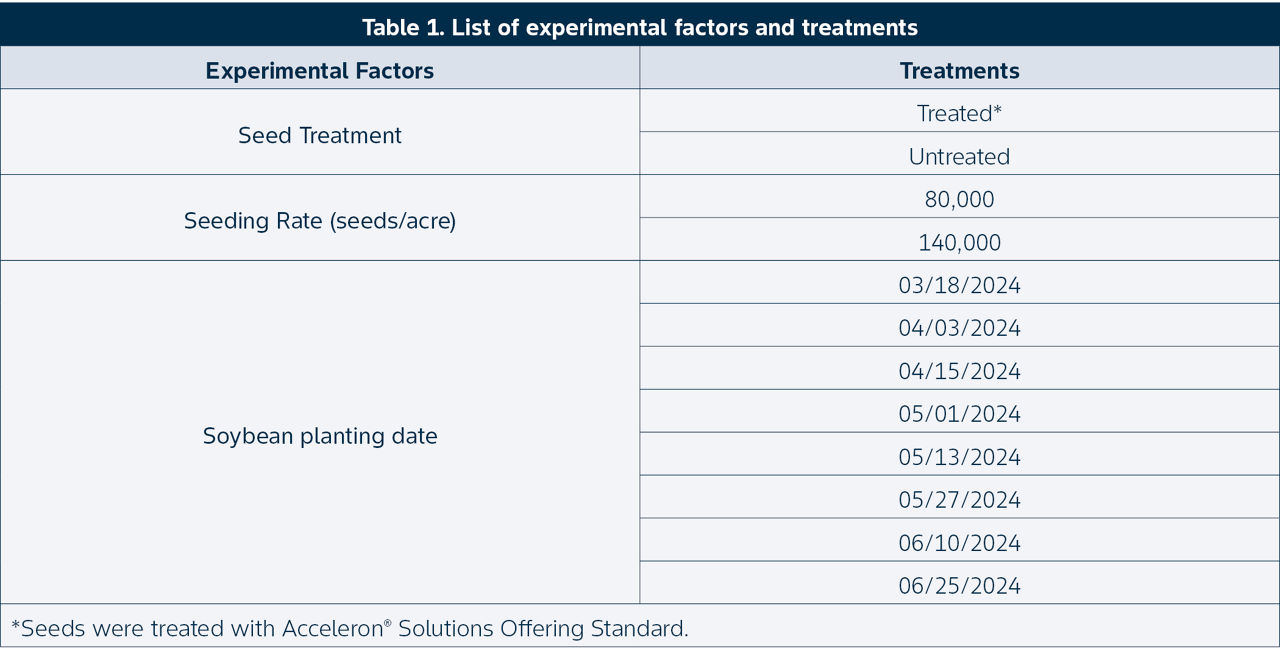
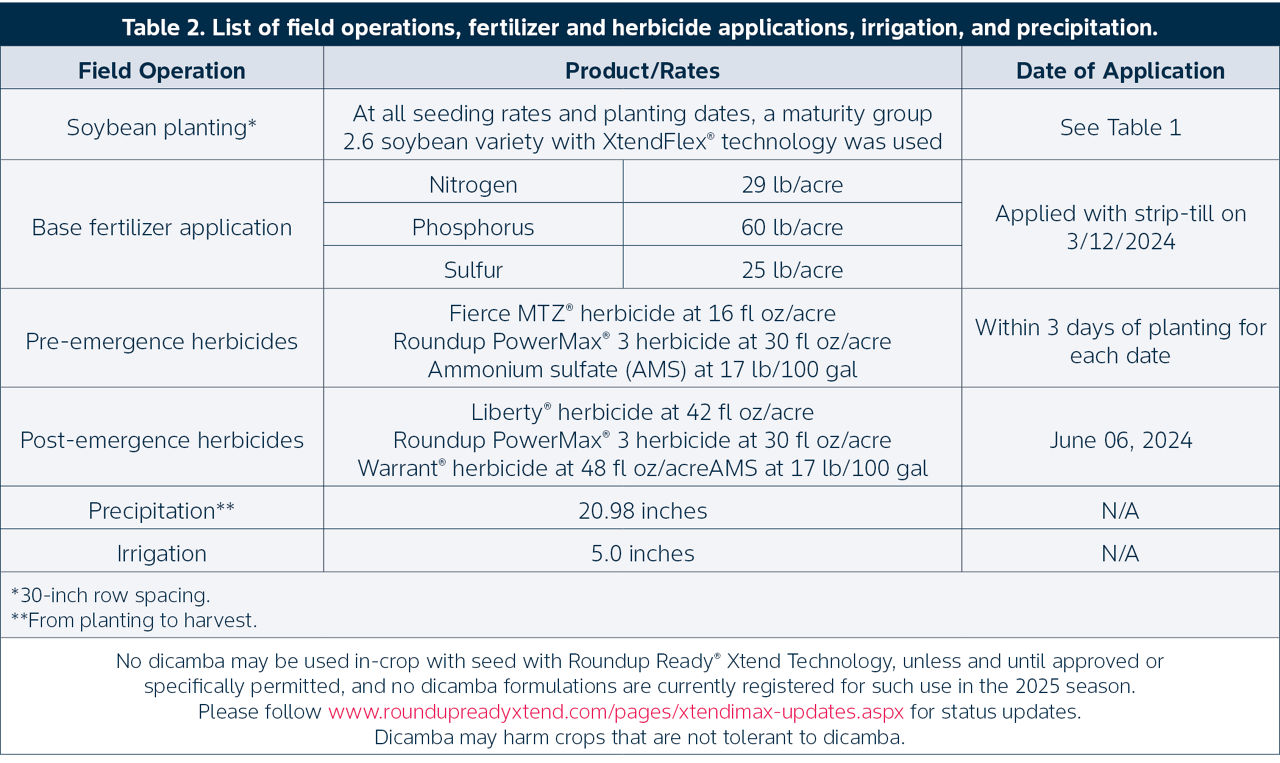
- Grain weight, test weight, and percent grain moisture content for each plot were collected with a small plot combine and used to calculate yield per acre (bu/acre).
- Statistical analysis using Fisher’s Least Significant Difference (LSD) was performed on the data.
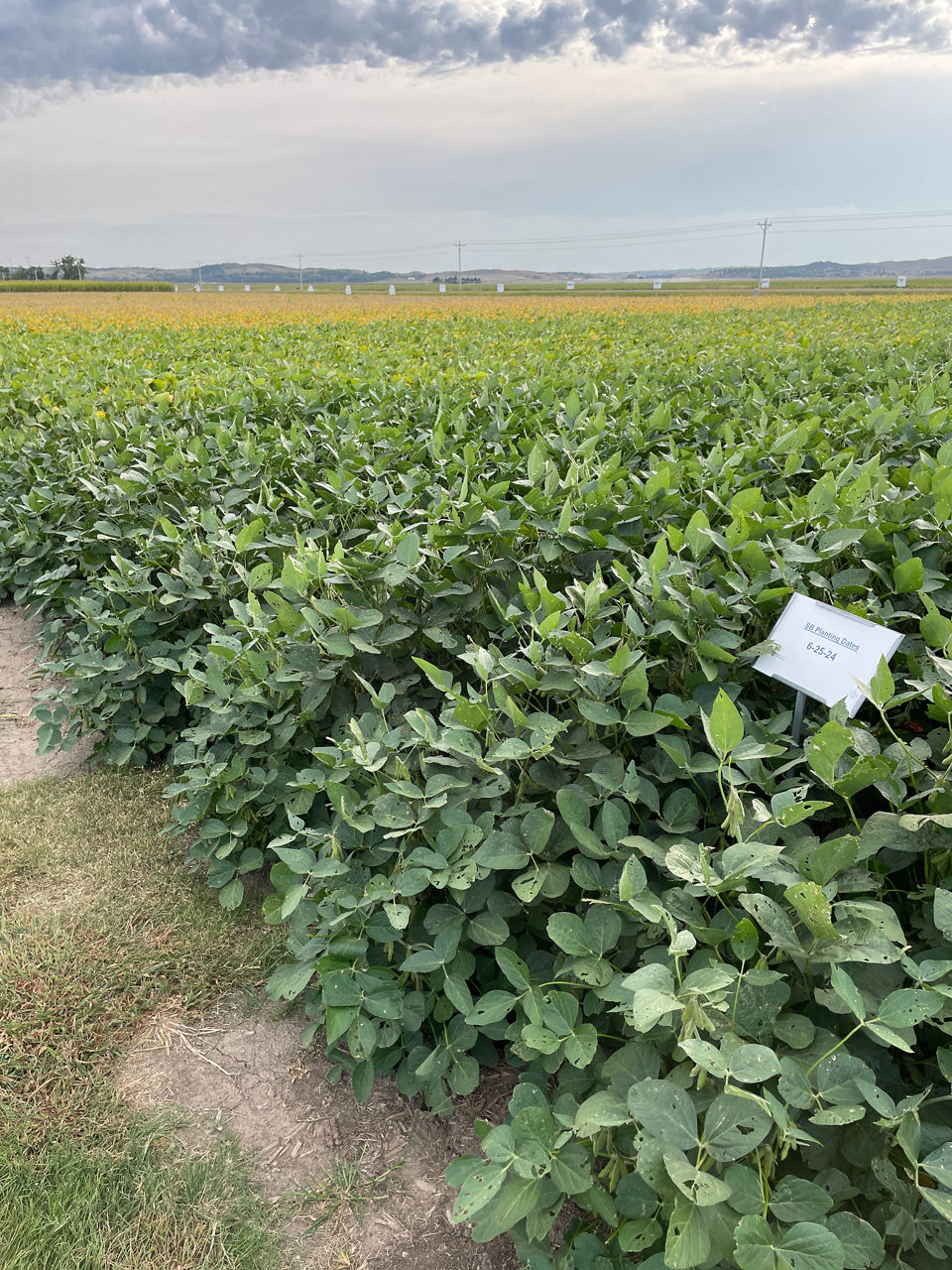
UNDERSTANDING THE RESULTS

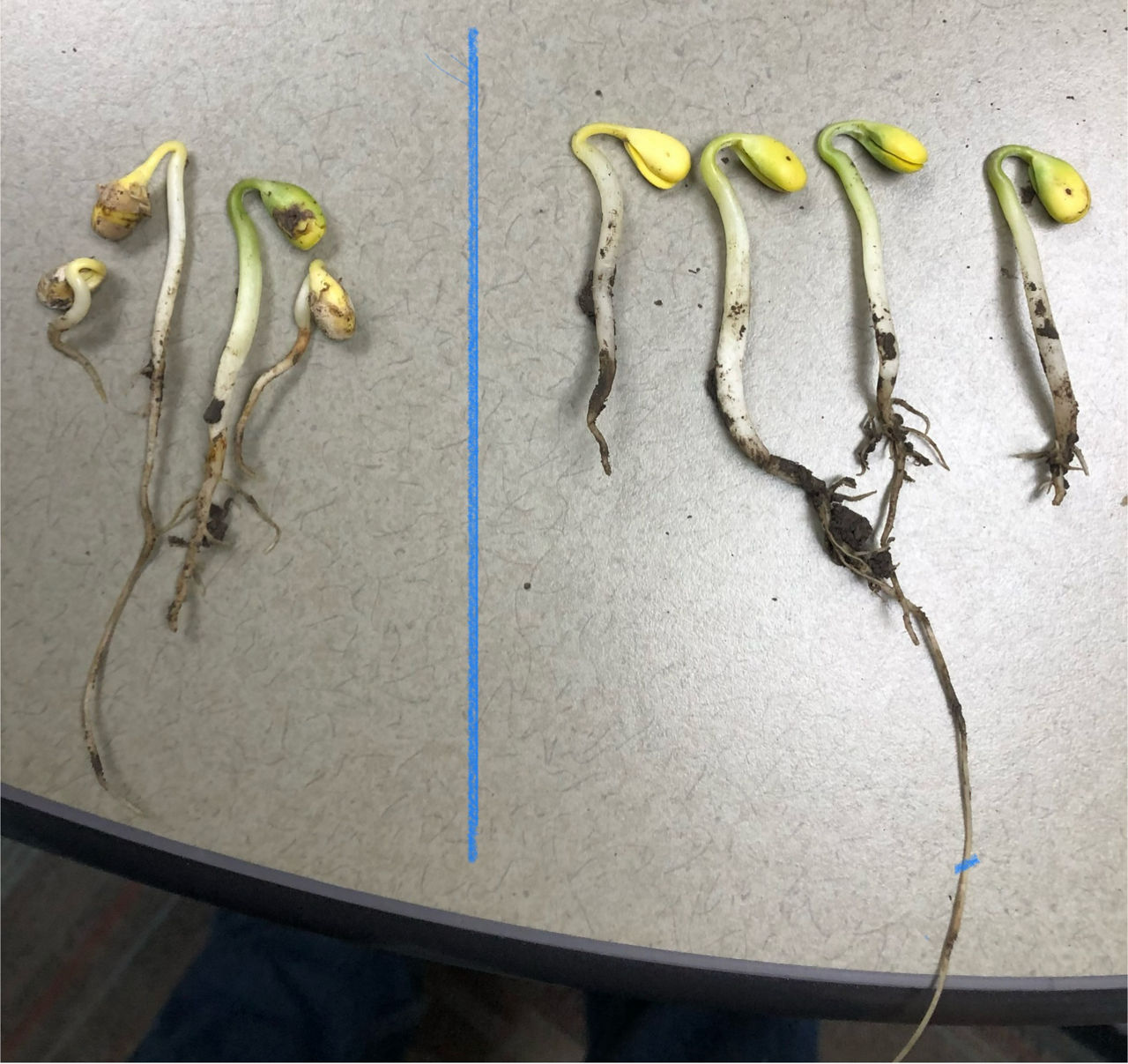
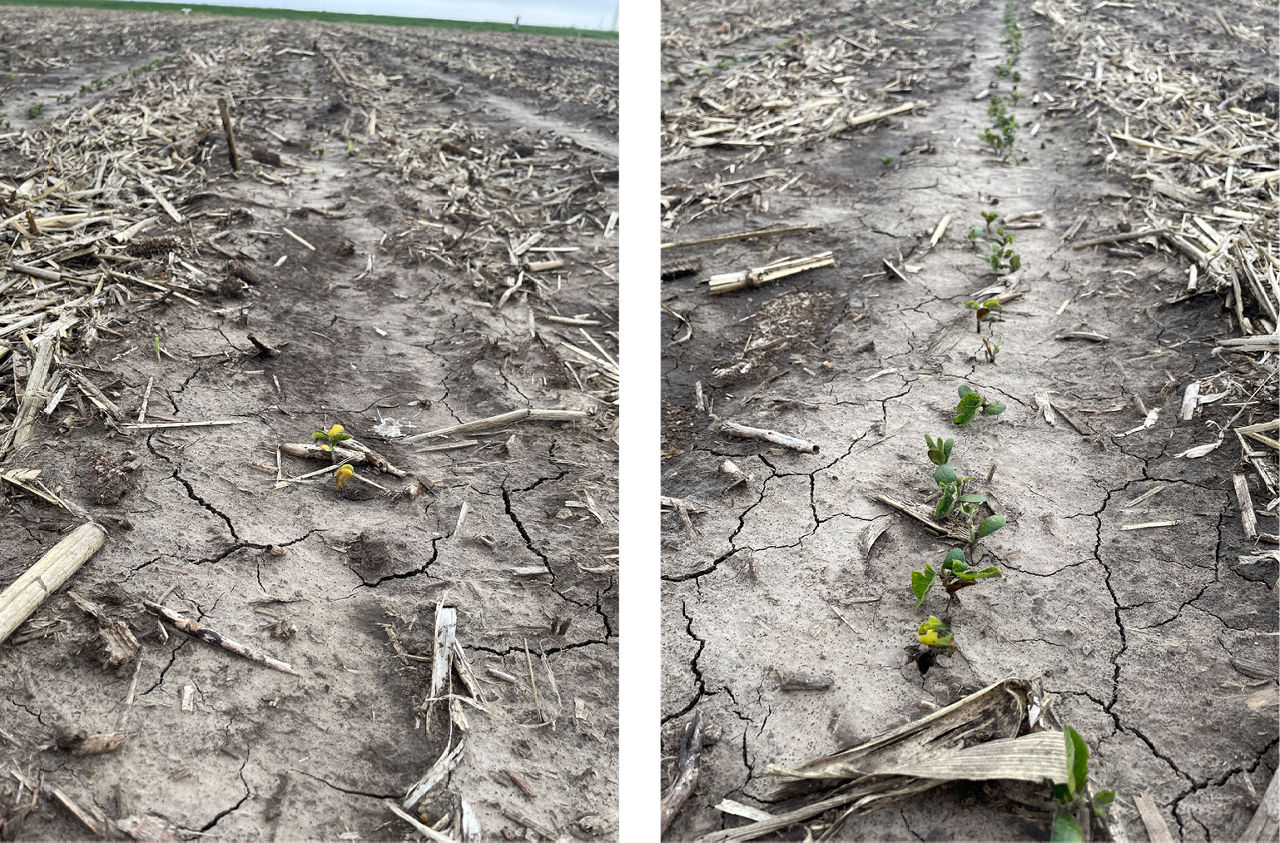
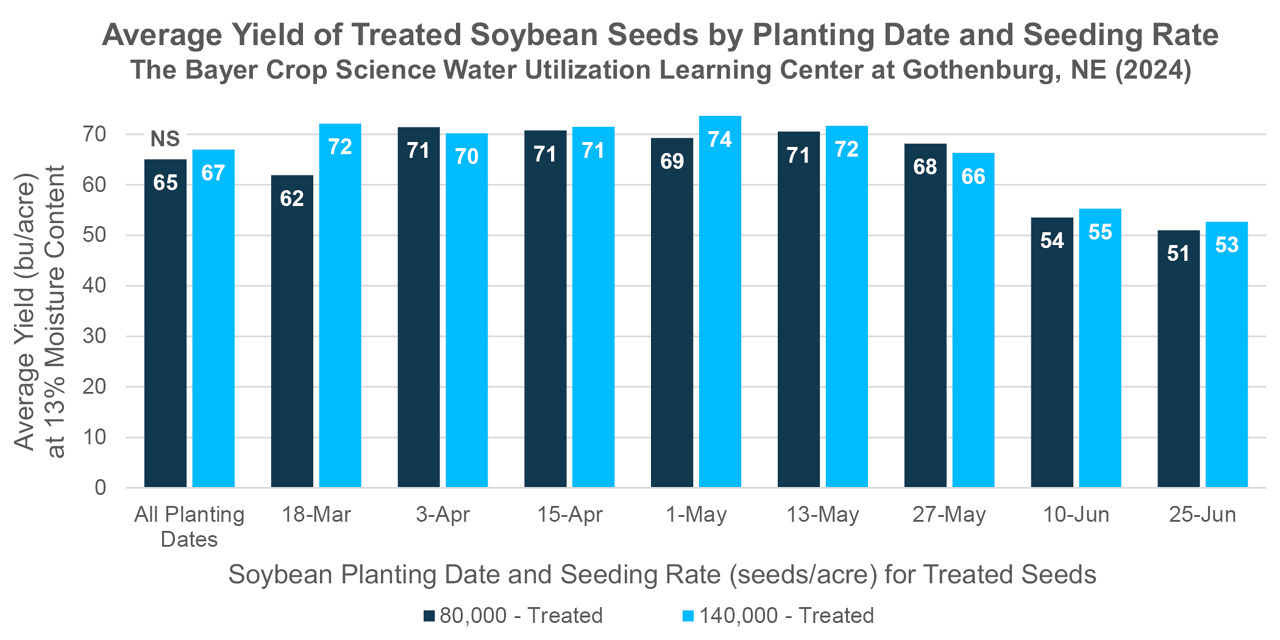
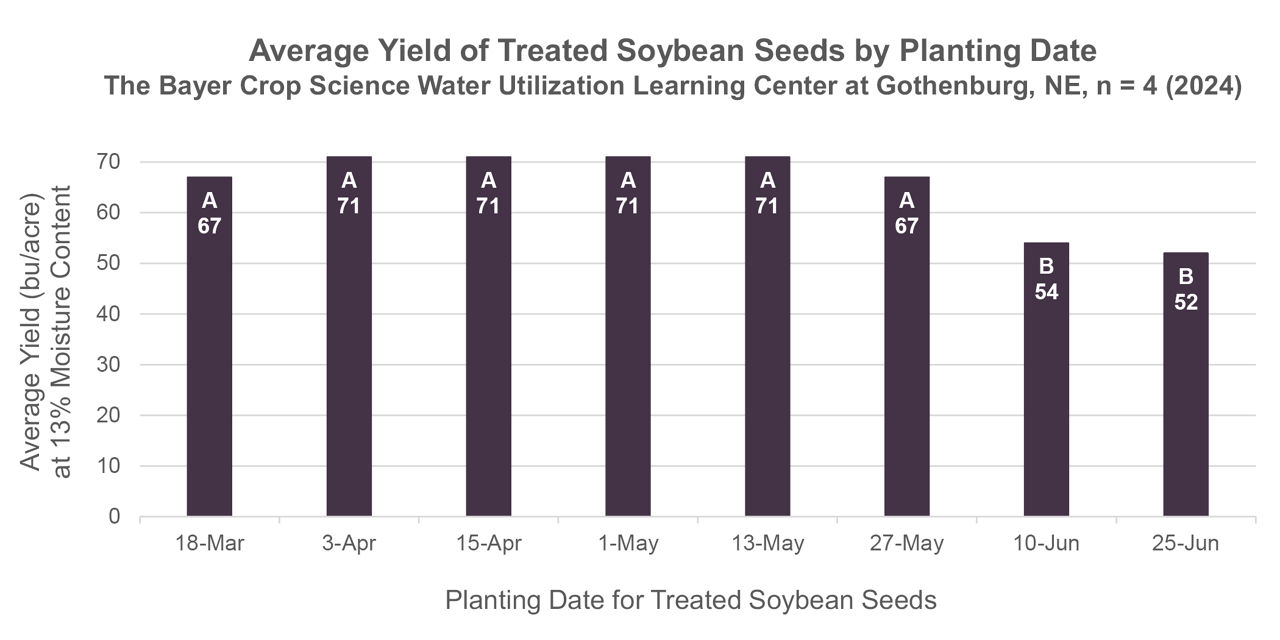
- Seeding rate had no significant impact on the average yield produced by treated soybean seeds (Figure 5).
- The average yield from the treated soybean seeds remained stable for both seeding rates from the March 18, 2024, planting date to the May 13, 2024, planting date, with a decline beginning on the June 10, 2024, planting date (Figure 6).
- The average yield of the treated soybean seeds dropped significantly for later planting dates (June 10 and June 25, 2024), highlighting the importance of timely planting to help maximize yield potential (Figure 6).
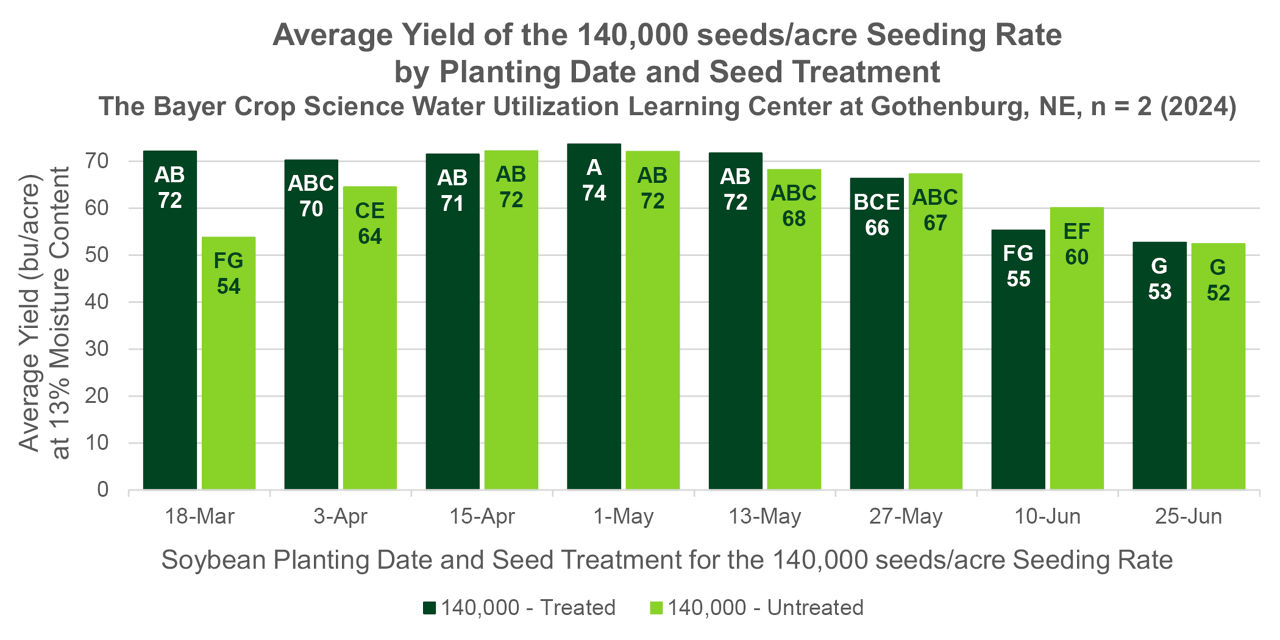
- The highest average yields for both the treated and untreated soybean planted at 140,000 seeds/acre were observed with the April 15, May 1, and May 13, 2024, planting dates (Figure 7).
- Treated seeds produced higher average yields than untreated seeds at the 140,000 seeds/acre seeding rate in early planting dates (March 18, 2024). The largest difference in average yield also occurred on March 18, 2024, where seed treatment increased average yield by 18 bu/acre (Figure 7).
- After the March 18, 2024, planting date, the average yields of treated and untreated seeds were not statistically different in the 140,000 seeds/acre seeding rate, suggesting that seed treatment is most beneficial in mitigating early season stress factors (Figure 7).
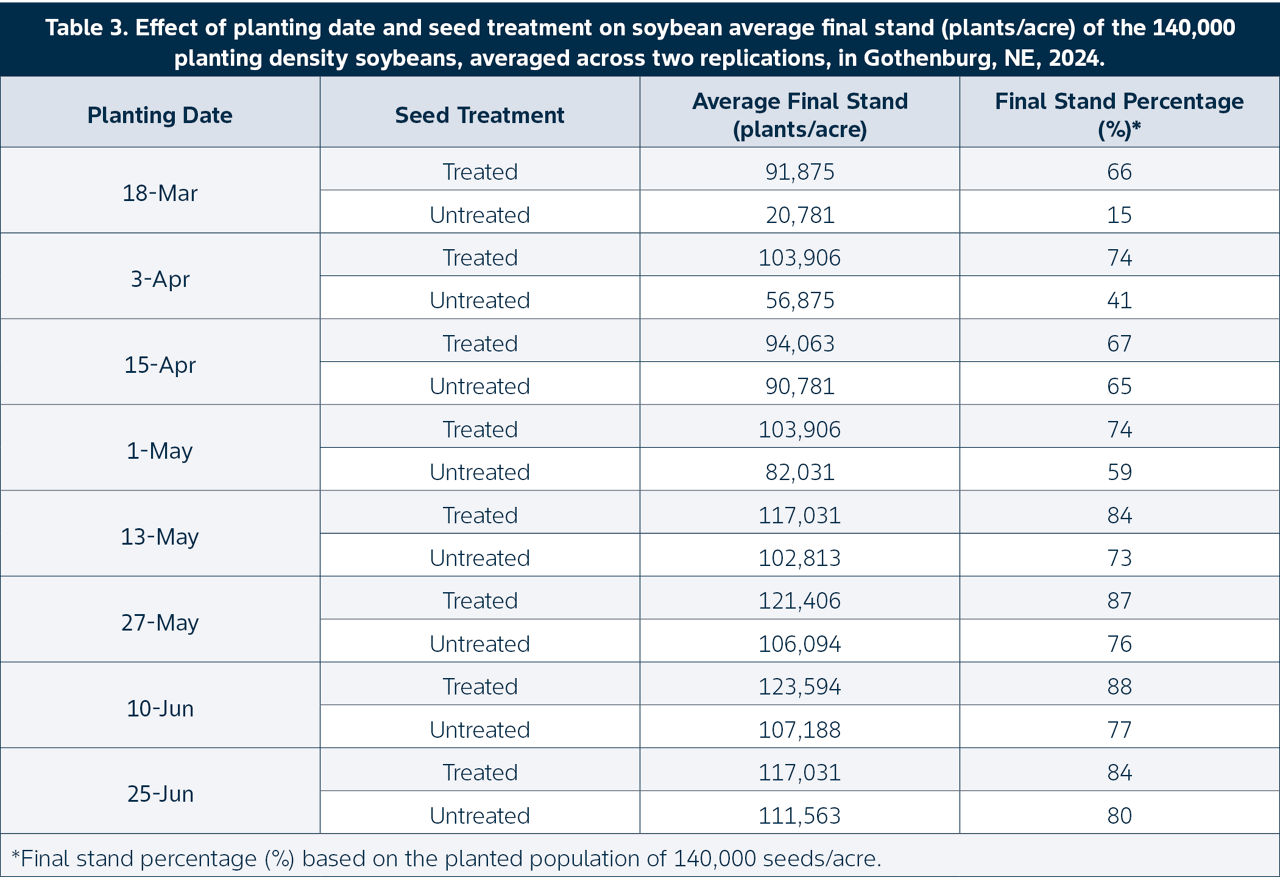
KEY LEARNINGS
- In this trial, seed treatment boosted the average yield of early planting dates (March 18, 2024) and helped improve stand establishment. Improving stand establishment has been shown to help reduce risks from soilborne diseases. Seed treatment had a lower impact on average yields of plots with later planting dates, although seed treatment is still recommended.
- The highest average yields were achieved between April 15 and May 13, 2024. Planting before April 15 is possible with proper seed treatment, while delaying too long (after June 1) may result in significant yield loss, as seen in this trial.
- For March or early April planting, expect lower emergence, especially without seed treatment. Later plantings (after mid-May) have been shown to have more consistent stand establishment.
- There is a higher risk of frost damage when planting soybean in late March and even in late April in this trial location, though this did not occur in 2024.
- Higher planting densities remain recommended as protection against weather risks like hail and other environmental conditions that lower soybean stands.
1314_534250